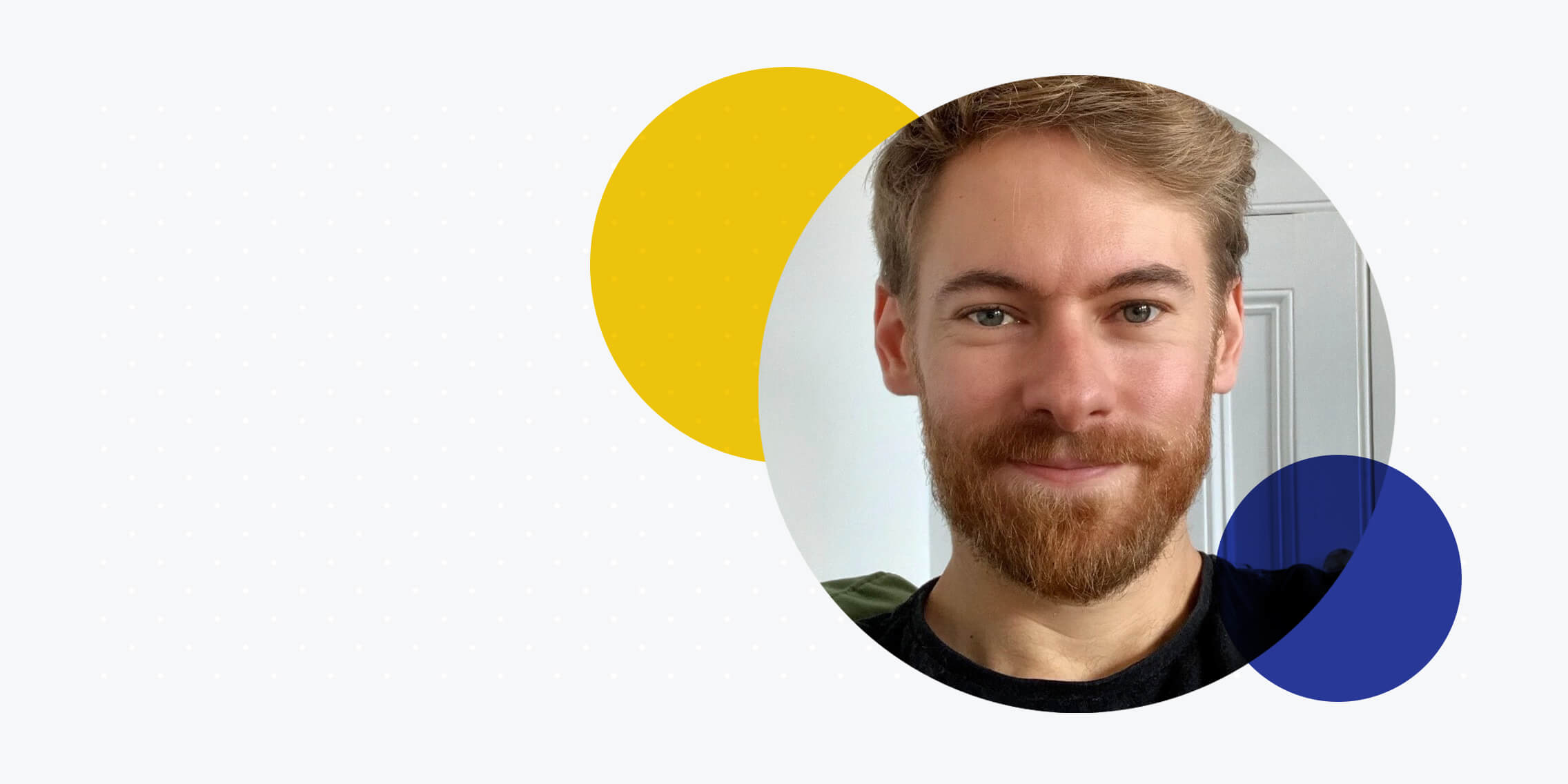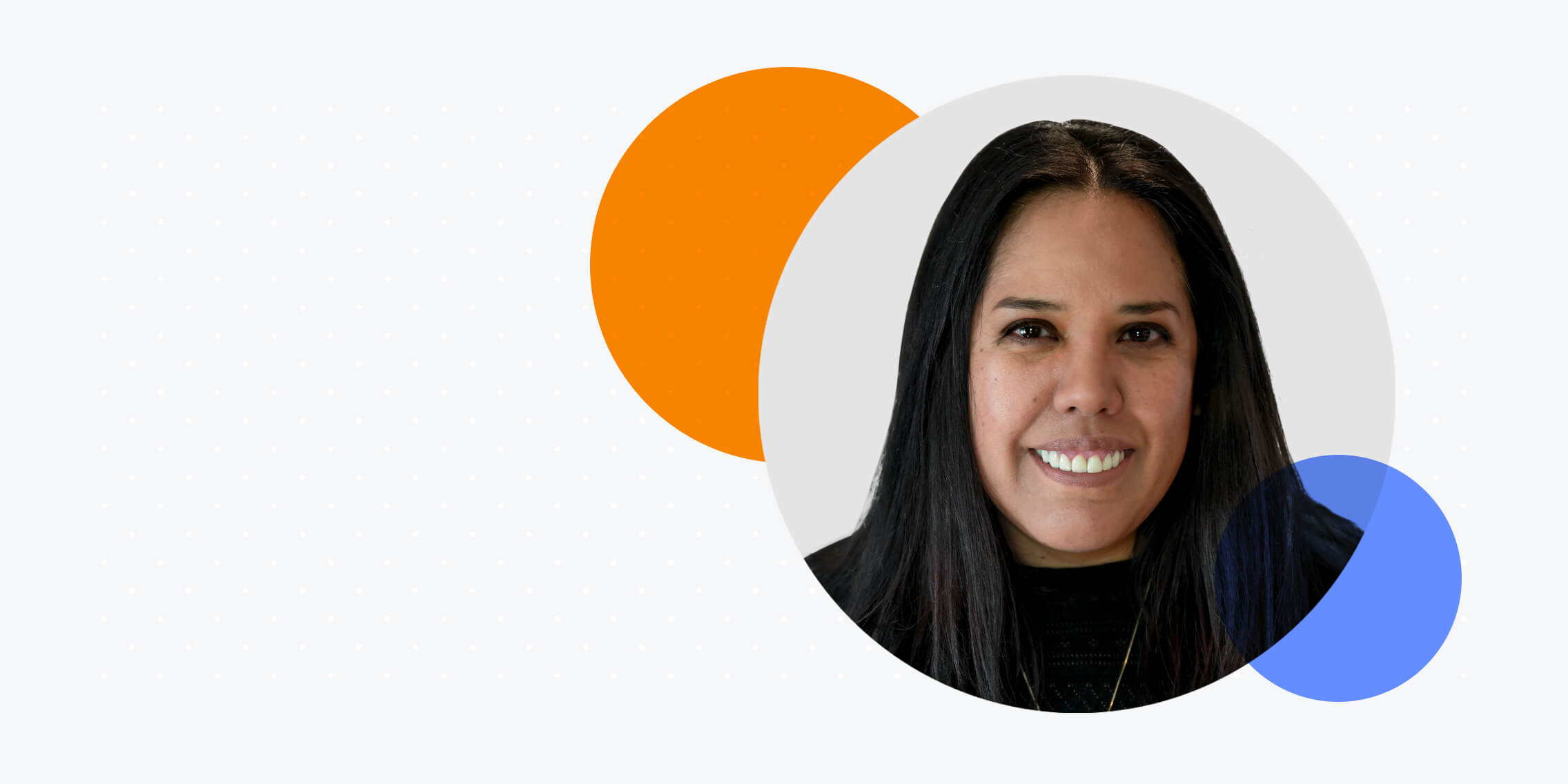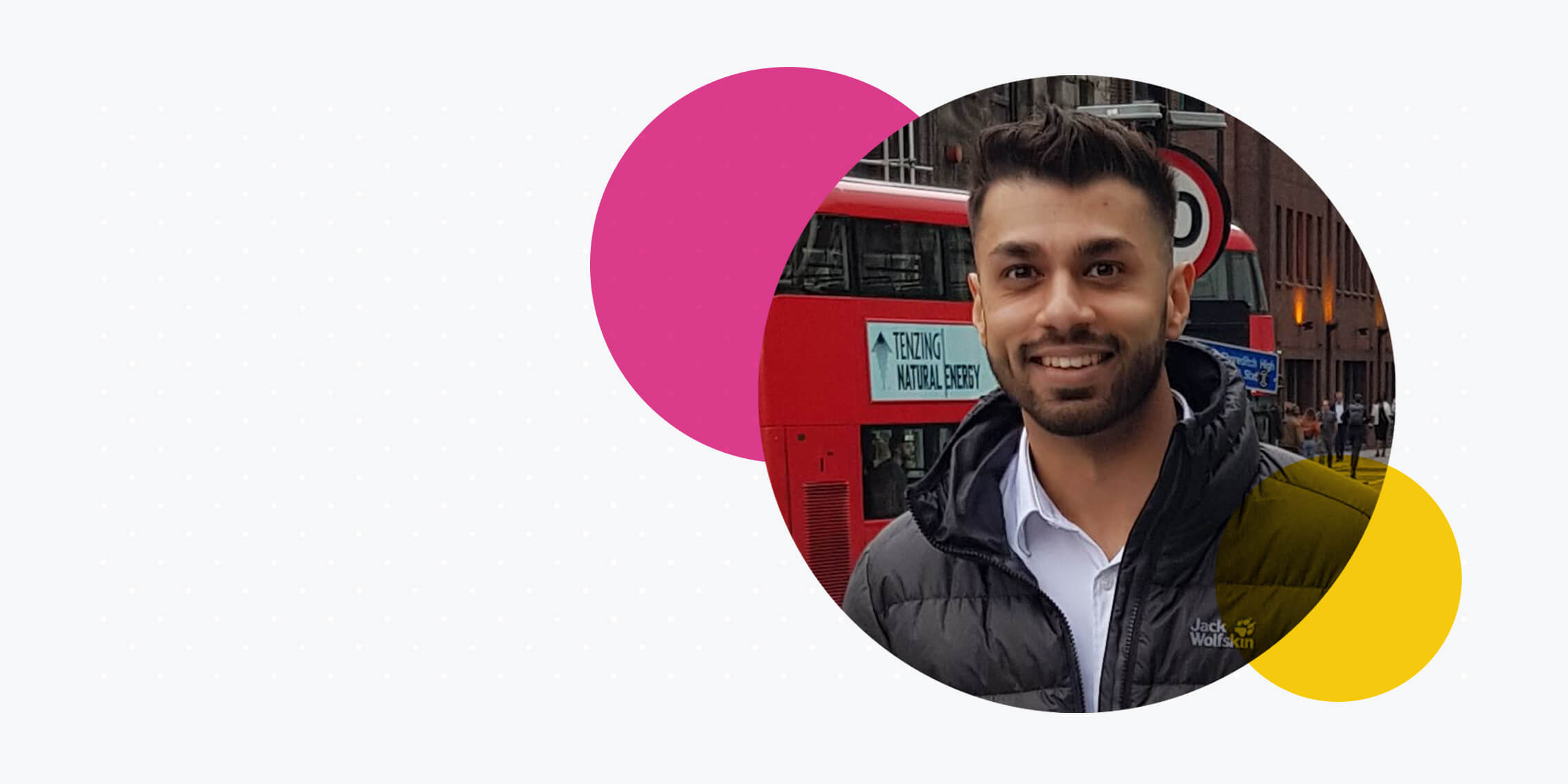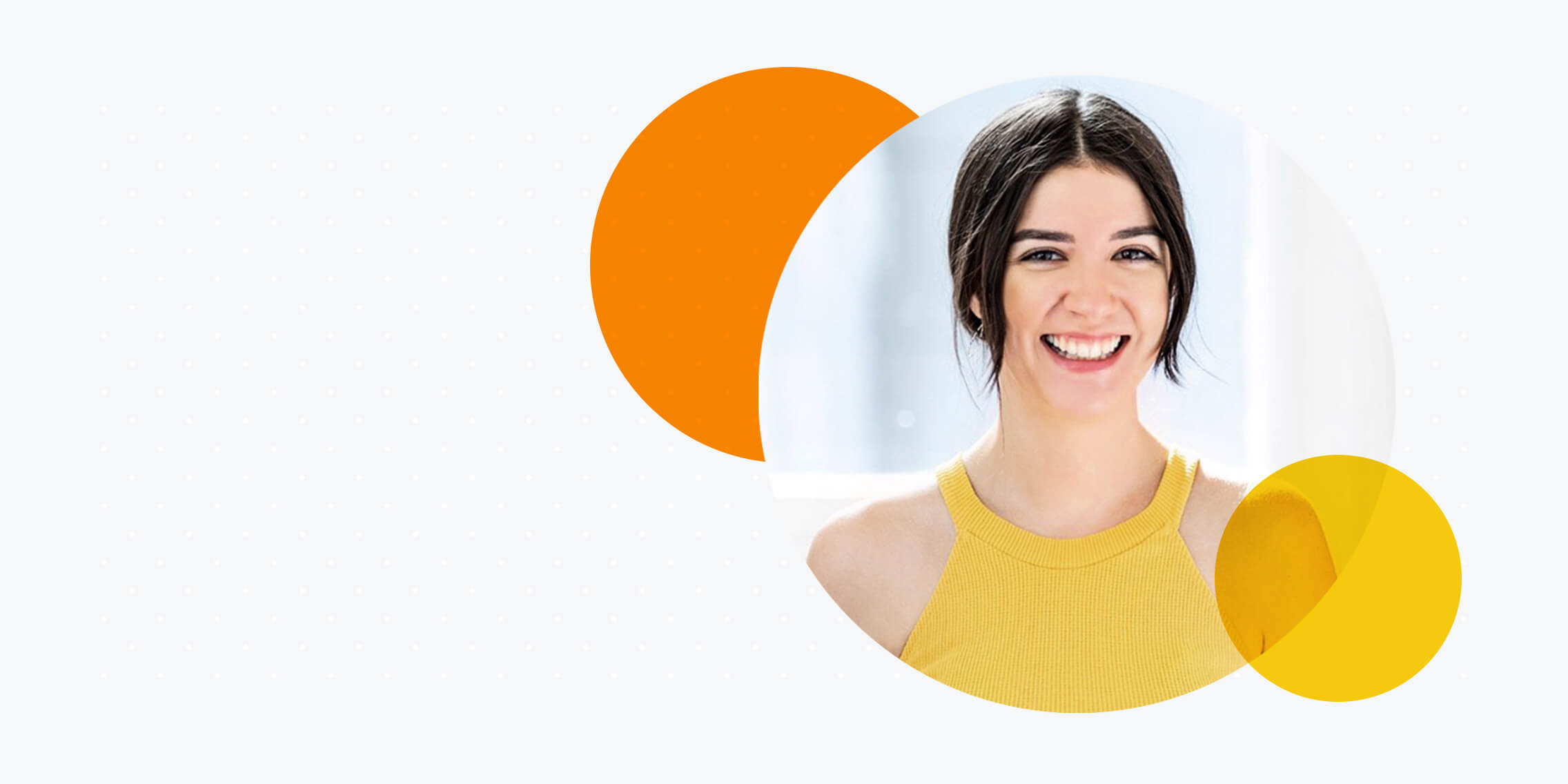When web designer Daniel found himself filling a senior design position, his confidence lacked without UX training. He told us how our Professional Diploma in UX Design helped him upskill, create a portfolio and grow his confidence.
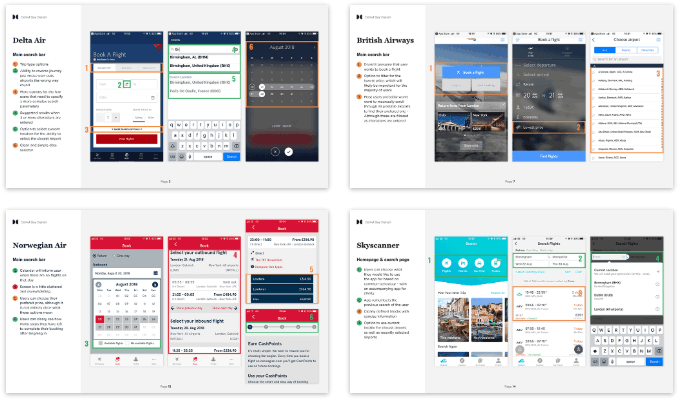
Daniel’s competitor benchmarking research
What’s your career background?
I came from graphic design. I really enjoyed its whole brand aspect but I didn’t make anything that was impacting the world. This realisation started my journey towards UX.
Before I discovered UX, I became more interested in web design. I liked how it was a more dynamic discipline with a behavioural aspect. This moved me into the realm of users, their behaviour, and how to make things easier for them.
Why did you choose the Professional Diploma in UX?
Back when I started working in my current company, the senior designer recently left, so I had some pretty big boots to fill. Luckily, my boss noticed the Professional Diploma in UX and she asked if it was something I was interested in. I said “absolutely.”
I needed to learn a lot of information in a short space of time – it fulfilled those requirements.
How did you find the course coming from a design background?
I was confident in my design abilities but the user research side of the course opened up a landscape of possibilities. It’s great to be able to design based on hard data and have the confidence to know that you’re solving a real problem. You’re not just designing something that you like or that you think people might like. There’s an objective benefit to user research and it gives you confidence.
Did you implement what you learnt at work?
As soon as I passed my exam, I began implementing what I had learnt.
I held workshops straight away, and ran my first set of usability tests. The Professional Diploma in UX Design has helped me hit the ground running.
I’ve involved different team members and showed them videos of everything I’ve captured. They’re definitely sold on UX design and they’re seeing its value. The course has given me confidence in my ability to do UX. I think you need that, particularly when you get pushback from management and stakeholders.
Would you recommend the course?
I would definitely recommend the course to others. It’s probably the best decision I’ve made in my career so far. It empowers you with the skills you need and the confidence to do it.
Can you talk about the UX portfolio you created in your coursework?
The project I undertook during the course was to research, analyse and design a flight booking system. It involved putting every part of the UX process into practice, from user research through to usability testing.
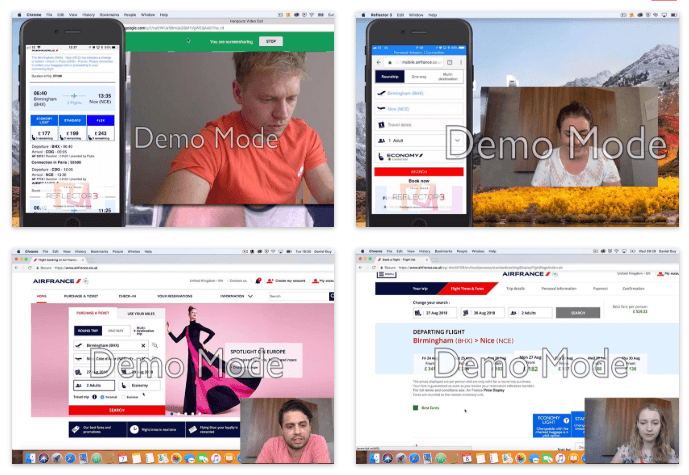
Daniel’s usability tests
I wanted to put together a presentation to show my company a summary of what I’ve been working on, the design process and the outputs. My portfolio started off as a series of PDFs to educate colleagues about the UX design process.
The term ‘UX’ got bandied around in my company. I wasn’t 100% certain that some colleagues knew what they were referring to when I was told to “do some UX”. It wasn’t very constructive.
Now I can confidently communicate the UX design process to them, and the reasons behind each step.
Describe how you structured your portfolio to communicate the UX design process.
When it came to putting everything into a formal portfolio for my benefit (and not my colleagues), the focus changed to emphasising the output at every stage.
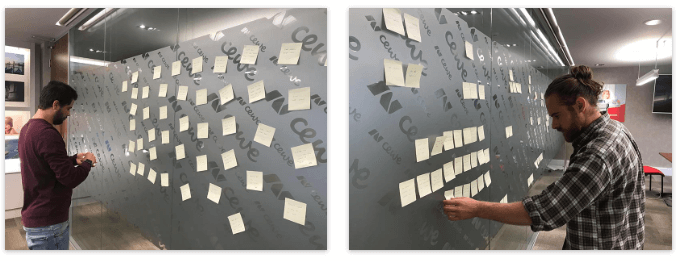
Daniel’s affinity diagrams
Largely my website portfolio shows the objectives of the project, then systematically goes through the process step by step, describing what I did, what was achieved and what I found useful.
Any portfolio advice?
I wanted my portfolio to stand out aesthetically because I’m from a graphic design background. However, aesthetics came second to the actual content in the portfolio.
Content wise – focus on what you did, what you achieved, and why that was important to you. The UX process is a big thing; the start to finish process of going from research to testing to implementation. You need to show how you can do that and how that can be applied to a number of different projects, in different circumstances.
I really wanted to showcase to people that I have a process by showing examples of the different design phases.

